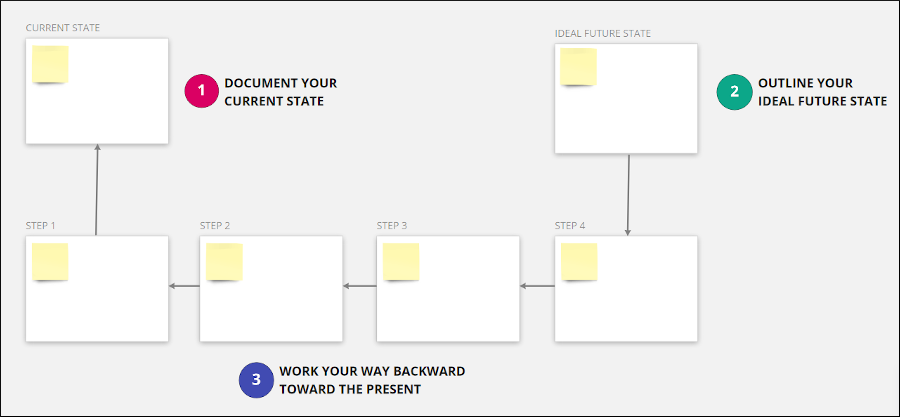
What if you could “reverse engineer” your ideal future?
Wikipedia defines reverse engineering as “a process or method through the application of which one attempts to understand through deductive reasoning how a device, process, system or piece of software accomplishes a task with very little insight into exactly how it does so.”
In layman’s terms, you literally or metaphorically take something apart to figure out how it works. In the case of goal setting, you first envision your ideal future and then deduce what would need to happen and what would need to be true in order for that perfect future state to come about.
A much different approach to envisioning your future
For most of us, goal-setting is a linear thinking exercise. You take whatever you accomplished this year and will increment it upward by X percent.
But what if you had a way to dream bigger dreams – to set ambitious, creative goals that would help you to get much closer to your ideal future? Here’s a simple, three-step visual method for doing just that:
- Document where you are now
- Envision your ideal future state
- Work backward from there to the present, “reverse engineering” the steps you need to take to get there
It’s the equivalent of scaling Mount Everest by starting at the summit, not base camp.
It’s so simple that you may be tempted to believe it’s not worth your time and attention.
But it works like a charm.
Why?
Because it forces your brain to leap out of its well-worn, comfortable, incremental paths of thinking and take a creative leap into the future. It forces you to ask yourself questions like:
- “How can we…?”
- “What could I accomplish or bring about if there were no limitations?”
- “What would need to occur in order to…?”
- “What do I need to learn/create/discover…?”
- “What if…?”
- “What do you really want and how would you know if you had it?”
Once you know what the end goal is, you can work on identifying any barriers or limitations and making plans to eliminate or sidestep them.
The problem with incremental goals
Incremental goals are like blinders. They force you to look straight ahead. They’re “safe.” But they’re not very inspiring.
Experts say that setting BHAG (big, hairy, audacious goals) forces us to be more creative, more lateral, more divergent in our thinking.
Some of history’s greatest thinkers and business leaders have used this method to achieve phenomenal success:
– Henry Ford, who envisioned a car that would be inexpensive enough for the average working man to afford
– Steve Jobs, who envisioned “insanely great” products and then pushed his people and suppliers to extraordinary lengths to bring his ideas to life.
– Elon Musk, who is in the process of revolutionizing multiple industries at once with his “moonshot” goals
Creating this template in Miro

The visual collaboration tool Miro, with its flexible canvas, is the perfect tool to envision an astounding future. Setting up a template like this is incredibly simple:
- Create a frame large enough to contain multiple sticky notes. I sized mine to hold a maximum of 6 notes. You can make them any size, of course.
- Note the path I’ve created in this diagram. It’s not a straight-line path from the present to the future. It’s a DIFFERENT path. This design illustrates that in a memorable way. My diagram shows 4 backward steps from the future to the present – feel free to create as many steps as you need to document your process for reverse engineering your ideal future.
- Connect the frames with arrows, pointing right to left.
- Note how this diagram follows a timeline – the present on the left, the future on the right. This makes it easy to see how your brainstorming will take you “back from the future” to the present day, imagining what would have to be true and what would need to happen in order for your ideal future to come to pass.
- Customize the frame titles
Start brainstorming your ideal future and use this tool to reverse engineer your path to get there!

Leave a Reply